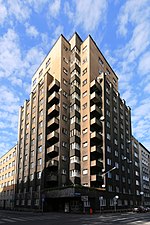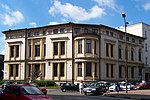Silesian Voivodeship (1920–1939)

The Silesian Voivodeship (Polish: województwo śląskie; German: Woiwodschaft Schlesien) was an autonomous province (voivodeship) of the Second Polish Republic. The bulk of its territory had formerly belonged to the German/Prussian Province of Silesia and became part of the newly reborn Poland as a result of the 1921 Upper Silesia plebiscite, the Geneva Conventions, three Upper Silesian Uprisings, and the eventual partition of Upper Silesia between Poland, Germany and Czechoslovakia. The remainder had been the easternmost portion of Austrian Silesia (see Cieszyn Silesia) which was partitioned between Poland and Czechoslovakia following the collapse of Austria-Hungary, the Polish–Czechoslovak War and the Spa Conference of 1920. The capital of the voivodeship was Katowice.The voivodeship was dissolved on 8 October 1939 following the German invasion of Poland, and its territory was incorporated into the German Province of Silesia. After the defeat of Nazi Germany in World War II, its territory was incorporated into a new, larger Silesian Voivodeship which existed until 1950.
Excerpt from the Wikipedia article Silesian Voivodeship (1920–1939) (License: CC BY-SA 3.0, Authors, Images).Silesian Voivodeship (1920–1939)
Mikołowska, Katowice Załęska Hałda (Załęska Hałda-Brynów)
Geographical coordinates (GPS) Address Nearby Places Show on map
Geographical coordinates (GPS)
| Latitude | Longitude |
|---|---|
| N 50.25 ° | E 19 ° |
Address
Mikołowska
Mikołowska
40-068 Katowice, Załęska Hałda (Załęska Hałda-Brynów)
Silesian Voivodeship, Poland
Open on Google Maps











